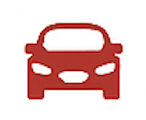The Evolution and Impact of Car Culture in Mongolia
The Unique Geographic and Cultural Factors Shaping Mongolia's Vehicle Use
Mongolia's vast, sparsely populated landscape has played a critical role in the development of its car culture. With one of the lowest population densities in the world, the need for personal and durable vehicles capable of traversing challenging terrain is paramount. Many Mongolians live outside urban centers, in remote countryside areas where roads are often unpaved or nonexistent, making off-road capable vehicles a necessity rather than a luxury.
Nomadic traditions still influence much of Mongolian daily life, including transportation habits. While horses remain a symbol of national pride and are still used in some rural areas, the car has become a modern tool that complements nomadic mobility. For many herding families, SUVs and vans serve as essential links to markets, schools, and healthcare facilities, particularly during the harsh winters when traditional methods of travel are impractical or unsafe.
The capital city, Ulaanbaatar, reflects a different side of Mongolian car culture. There, car ownership is driven by urban growth, economic development, and personal convenience. The city is home to the majority of Mongolia's registered vehicles, and car ownership is seen as both a practical asset and a symbol of socioeconomic advancement. However, this urban concentration of vehicles has led to increasing traffic congestion, particularly during peak hours, which has spurred conversations about urban planning and transportation reform.
The Dominance of Used Japanese Imports on Mongolian Roads
One of the defining features of Mongolia's automotive landscape is the dominance of used Japanese vehicles. Thanks to proximity, affordability, and reliability, cars imported from Japan make up the bulk of Mongolia's car fleet. These vehicles are often right-hand drive, which can be confusing since Mongolia drives on the right side of the road, but economic incentives have outweighed these logistical concerns for most Mongolian drivers.
Japanese models such as the Toyota Prius, Toyota Land Cruiser, and Nissan X-Trail are especially common. The Prius, in particular, has gained popularity not only for its fuel efficiency but also due to its lower import taxes and maintenance costs. It's not uncommon to see multiple generations of the Prius sharing the roads of Ulaanbaatar, a testament to the vehicle's ubiquity and local appeal.
Import practices have also led to a unique car modification culture. Some drivers convert their vehicles from right-hand to left-hand drive, though this process can be expensive and may compromise vehicle safety. Still, many opt to drive their right-hand vehicles as-is, having adapted to the unconventional arrangement with relative ease.
Off-Roading and Rural Driving Norms Across Mongolia
Driving in rural Mongolia is unlike driving in most countries. Outside the capital and a few provincial centers, formal roads are scarce. Instead, drivers often follow dirt tracks, riverbeds, and even pastures to reach their destinations. This style of driving requires a deep familiarity with local geography, seasonal conditions, and mechanical self-sufficiency, as roadside assistance is rarely available outside major towns.
Vehicles like the Russian-made UAZ vans and Soviet-era jeeps remain in use throughout the countryside. These rugged vehicles are favored for their high clearance, durability, and ease of repair. Their design, while outdated by modern standards, is ideal for traversing Mongolia's steppe and desert environments, particularly in regions like the Gobi or the Khangai Mountains.
Off-roading isn't just a necessity in Mongolia—it's also a lifestyle. Adventure tourism companies offer off-road driving experiences to foreign visitors, using Mongolia's terrain as a natural obstacle course. This trend has helped build a niche but growing subculture of recreational off-roading among Mongolians themselves, who increasingly organize road trips into the wilderness using four-wheel-drive vehicles or dirt bikes.
Traffic Challenges and Urban Mobility in Ulaanbaatar
Despite its relatively small size by global standards, Ulaanbaatar faces significant traffic congestion, especially during morning and evening rush hours. This problem has grown in recent years as car ownership has expanded more rapidly than road infrastructure. The city's limited number of bridges and bottlenecks exacerbates delays, often resulting in multi-hour commutes within a city that spans only about 470 square kilometers.
Efforts to reduce congestion have included the introduction of odd-even license plate driving rules, where cars can only drive on certain days depending on their plate number. While this policy has had a marginal effect, many residents have found ways around the regulation, such as purchasing a second vehicle with an alternate plate.
Public transport is available in the form of buses and microbuses, but it remains underdeveloped compared to the city's needs. Ulaanbaatar lacks a subway or tram system, and the winter climate—marked by extreme cold and pollution—further deters people from walking or biking. This has created a dependency on private vehicles, with limited viable alternatives.
Cultural Symbolism and Automotive Expression in Mongolia
Cars in Mongolia are more than just transportation—they often reflect personal identity and aspirations. In urban centers, car customization is common, especially among younger drivers who see their vehicles as an extension of their lifestyle. Modifications may include upgraded sound systems, aftermarket wheels, and custom paint jobs, though luxury modifications are less frequent due to economic constraints.
In rural areas, a vehicle often represents a family's lifeline. It's not uncommon for herder families to give nicknames to their vans or treat them with a form of reverence, as the car enables access to food, medical care, and social life. These vehicles are often passed down across generations, reinforcing their emotional and practical significance.
Additionally, cars play a growing role in ceremonial life. Wedding convoys and funeral processions frequently involve motorcades, with vehicles adorned in ribbons and flags. In a country where vast distances separate communities, the car has become a cultural bridge between tradition and modernity, linking people, places, and generations through both necessity and expression.
